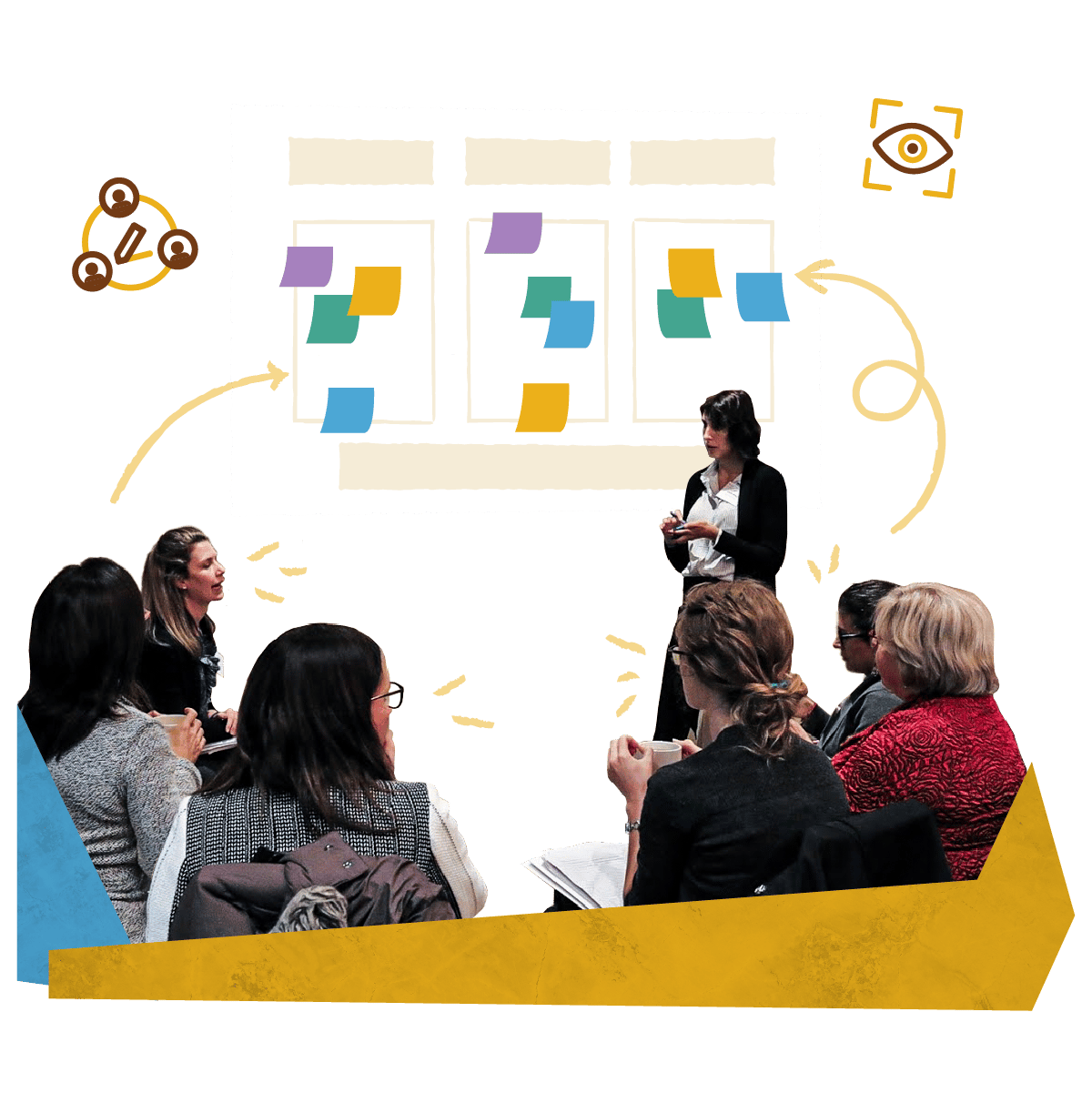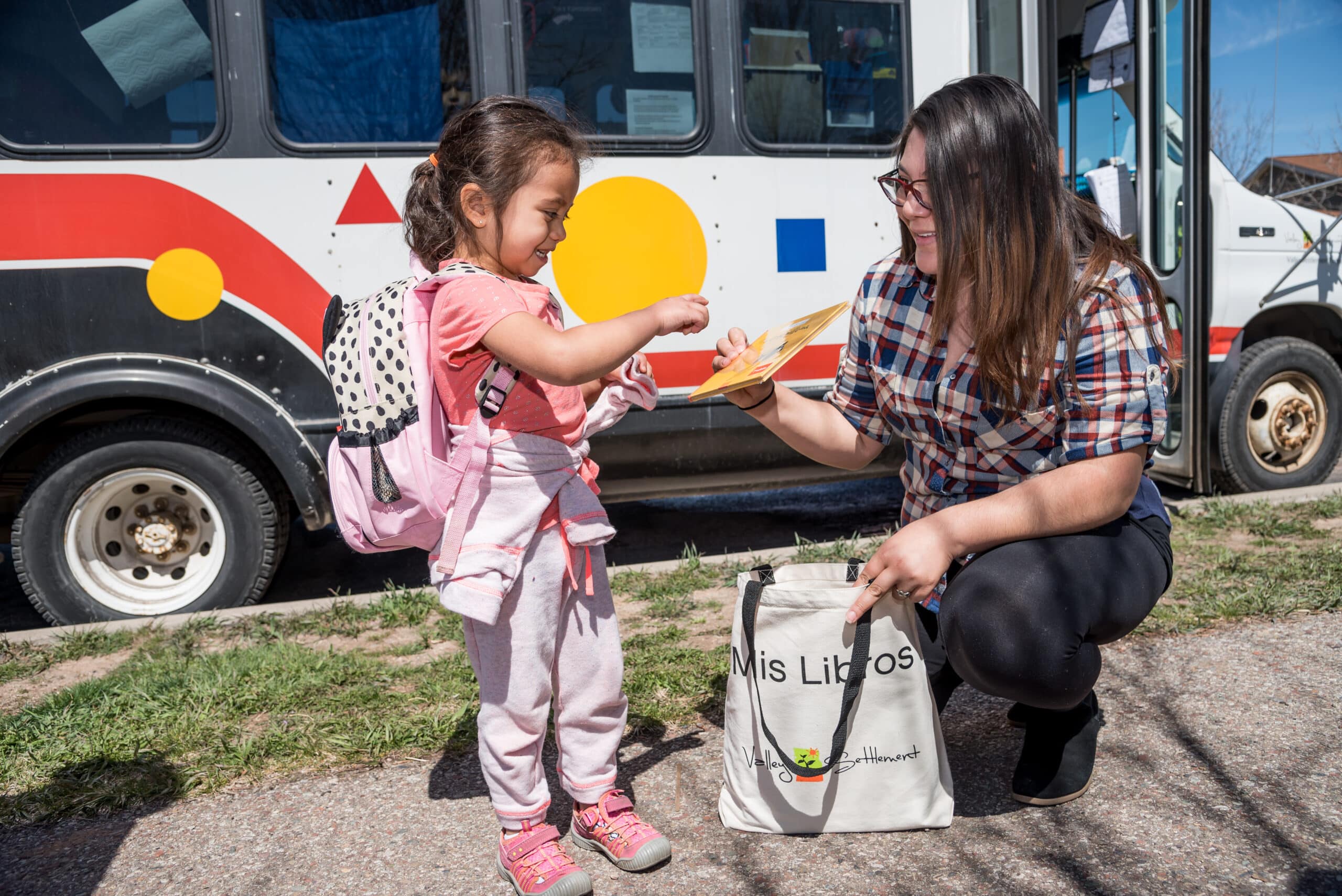Theory of Change
Getting clear and precise about what your program entails and how you hope to make a difference

Developing a Theory of Change
Although many early childhood programs find these four domains work well to capture their theory of change, the IDEAS Impact Framework ToC template is also designed to be flexible.
Some teams may find it helpful to adapt the template to better suit their program, for instance, by adding a column or other elements. One team decided to re-arrange their ToC into a circle to map onto the Medicine Wheel and Four Directions and better reflect and integrate their community’s cultural beliefs around the cyclical, nonlinear nature of life and the multiple dimensions of healing and well-being. Others have added a column to the left of strategies to capture how staff are trained to implement the strategies.
Click the links below to download a fillable ToC template your team can use to draft a ToC following the steps outlined below. The template is available in PowerPoint or a printable poster and can easily be recreated in another format (e.g. MS Word or an outline whiteboard application).
Below are suggested steps for creating a ToC; however, these steps are not necessarily undertaken linearly.
If you are developing a ToC for an existing program, you may want to complete the domains from left to right (strategies, then targets, then outcomes, ending with moderators). However, if you are creating a new program or are open to making significant changes to an existing program, you might begin with outcomes and work your way backward to identify the strategies needed to bring about those changes.
Step 1: Strategies
What actions does your program take to achieve desired changes?
When creating a ToC for a new program, begin by specifying the strategies. Strategies are the actions the program will take to achieve desired changes. Strategies can be person-based, place-based, technology-based, or other types of activities. Strategies are typically described in the program materials and are essential for documenting the program’s fidelity, or the degree to which the program is implemented as intended. Clearly articulated strategies move us from the question, “Does it work?” to “What about it works?”
Your team might find it helpful to create a storyboard of your program to help identify your strategies. Widely used in the motion picture production industry, storyboards are illustrations that represent individual shots or frames that together tell a story. This tool has been adopted as a human-centered design method for visualizing a participant or user’s experience.
Tips for identifying strategies:
- Strategies typically begin with an action word or verb.
- You may want to note who or what is taking action (e.g., group facilitator provides information…).
- Remember: Strategies can be person-based, place-based, technological, or other types of actions.
Step 2: Targets
What caregiver and/or child knowledge, skills, behaviors, beliefs, and/or attitudes do your program strategies directly aim to change?
After the strategies are defined, the second step is typically to identify targets. Targets are the skills, behaviors, beliefs, attitudes, and knowledge that the strategies aim to change in caregivers, children, and dyads. They are the participants’ direct responses to the strategies and are usually linked to the activities and ideas described in the program materials. Because the strategies directly target these skills and behaviors, this is often where you would expect to see immediate and large impacts.
Furthermore, if the expected outcomes are not achieved, examining impacts on targets may help explain where the breakdown in the predicted sequence occurred. In short, this part of the ToC moves us from the question, “Does it work?” to “How does it work?”
Tips for identifying targets:
- Your ToC should only have targets for the participants you directly engage with as part of the program. For example, if only caregivers participate in the program, you wouldn’t have child targets because they do not receive program strategies directly. But, you may have child outcomes.
- Note the direction of change you hope to see (i.e., increase or decrease).
- The targets should be evident in your program materials. For example, if you have a session designed to increase parental responsiveness, then “increasing parenting responsiveness” is a target of the program.
Step 3: Outcomes
What are the ultimate goals of your program?
Outcomes are the changes you hope to see in caregivers, children, the dyad, the community, etc., as a result of the program. These may encompass both immediate outcomes and longer-term outcomes. An outcome is important in and of itself—not just as a step toward another, more important goal.
Tips for identifying outcomes:
- Remember: Outcomes are meaningful changes in functioning or well-being.
- Outcomes might include short-term and long-term changes (e.g., things you’d expect to be different by the end of the program vs. things that may take more time to change).
Step 4: Moderators
What factors could affect who benefits most and/or least?
The IDEAS Impact Framework helps determine who benefits most from a program (to inform scaling) and who benefits least or not at all (to prompt a search for new ideas). To do that, the fourth step in the ToC process is to document potential moderators. Moderators are person- or context-based factors hypothesized to affect which participants benefit more from a program and which participants benefit less or not at all. In other words, moderators help explain individual differences in response to a program, moving us beyond evaluating, “Does it work?” to investigating, “For whom does it work or not work?”
Tips for identifying Moderators:
- Consider factors related to the caregiver, child, program staff, and context.
- Indicate the hypothesized direction of moderation (i.e., do you believe this factor is associated with better or poorer outcomes?).
Once you’ve drafted each domain of your ToC, you can continue to refine it by asking each of the following questions:
Confirm:
- Do your strategies include action words?
- Do targets, outcomes, and moderators indicate a direction?
- Is each strategy targeting at least one target?
- Is each target connected to at least one outcome?
Fill in – is there anything missing?
Trim down – is there anything that could be consolidated or removed?
Clarify – would someone who wasn’t part of the process know what you mean?

The El Busesito Theory of Change
The El Busesito team first drafted a ToC in 2018. In the spirit of co-creation, program staff (many of whom are members of the community served), leadership, and representatives of the research team were all involved in the process. The ToC has since been revised through multiple rounds of fast-cycle iteration. In the team’s words, “We [learned] that ‘less is more,’ and that refining your ToC often means paring down outcomes and targets that are not a focus of the program’s activities. For example, we removed the targets of decreased stress … since the program is not intentionally addressing [that outcome] for parents.”
The current El Busesito ToC (see below) reflects a high level of precision about what the program entails and how the team believes it has an impact. The El Busesito program includes multiple components, including services delivered to children and their parents. Each of these components is captured in their ToC. Remember that it’s only necessary to include strategies and targets for individuals your program or product engages directly with. For example, the ToC for a parenting group might only include strategies delivered to parents and the corresponding parent-level targets. The child-level change would be captured in the outcomes.